R. Lee Smith's Blog, page 26
November 9, 2013
J is for Judicature
J is for Judicature
Tagen’s eyes narrowed, and for a moment she didn’t think he would let her escape from her story. But in the end, he said, “Our doctors have ways of determining whether or not mental defect is present, and our people are tested routinely in their youth. It is unlikely Traynor Polidori could have escaped detection for so long, but it does happen…although never more than once. Traynor Polidori would have been chemically corrected and fit with a monitoring device for a probationary period after his first victim. If no such mental defect were found, he would have been imprisoned…There is an option given for self-termination at any time.” Tagen shrugged. “Seldom employed at first, but I am told it becomes popular after forty years or so.”—Heat
* * *
“We have very few rules here,” Horuseps said. He did not raise his voice, but such was the quality of the silence that it carried out as effectively as if he had. Releasing Mara, he stepped up to face the crowd, and those in front bowed to him. He walked among them, touching the backs of their heads as he spoke, idly glancing this way and that, strolling. “And we take pains that there are no surprises. Our ways are not secret. Nor, I think, are they difficult to comprehend. There are only a few inviolate laws and they are very simple.”
He turned around, walked back through the crowd until he came out of it and stood before the Black Door. He faced them again, resting his hands on his shoulders, his expression severe. “The breaking of those laws is never to be tolerated.”—The Scholomance
* * *
Oy, another big word. This one means ‘the act of judging, the administration of justice in accordance with the law’. Why didn’t I just say ‘law’? Because that would have left me with J is for Jelly or Jazz, neither of which is an attractive prospect for an entire blog post.
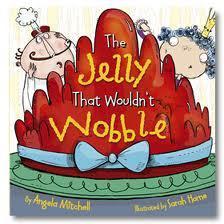
Although clearly there are stories that must be told.
So why didn’t I just say ‘Justice’? Because judicature, that’s why. Say it with me, slow: JU-di-ca-ture. Awesome. Use it to impress your friends! Now stop showing off and pay attention.
The first aspect to consider when thinking up a system of justice is who is entitled to it. In a perfect world, all people would be equally entitled to protection under the law, but I don’t live in a perfect world and I don’t very often write in one. Right here on Earth, in these enlightened times, justice is still denied certain people due to nationality, political affiliation, gender, sexual orientation, religion, race, color and creed. Injustice, prejudice and corruption make potent emotional tools when writing, provided you’re doing it for the right reasons. In fiction, it’s very popular for writers to blithely and pointlessly perpetuate the old werewolves-vs-vampires or elves-vs-dwarves hostilities for no better reason than just because another writer did it first. There are many great traditions in storytelling; thoughtless stereotyping is not one we have to carry forward.
Now let’s talk about judicature (love that word). Because this is supposedly a series on non-human world-building and not socio-political sciences, I promise to keep it short and use broad generalizations rather than make you read for hours about the Twelve Tables of ancient Roman law and how they pertain to our modern legal system.

For one thing, we use less lions.
Instead, I’ll talk/type/whatever about the concept of justice and the execution of the law as it was practiced at various inspiring (to me anyway) points in Earth’s history.
To begin with, let’s dispel the myth that the more primitive cultures practiced the most barbaric forms of law. We kill way more people per capita in the name of justice than most tribal societies and the reason is very simple: When you have a relatively small population, your survival depends upon every person contributing to the group in some way. No matter your grievance, you just can’t afford to kill people wily-nily. So although many white explorers wrote gory details of brutal executions for the most ridiculous ‘crimes,’ very little has been found to support their claims.
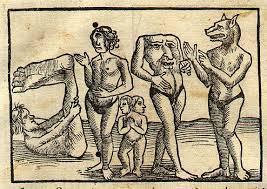
White explorers have a long tradition of lying to the folks back home.
This is not to say that there were no executions. Particularly in cases involving war or accusations of witchcraft, people were indeed killed following very summary trials (usually a trial by ordeal, in which guilt or innocence is determined by subjecting the accused to painful injury or poison). Also, a certain amount of guilt by association is found in primitive societies. If a man is found worthy of the death penalty, often so are his wives and children.
However, these are extreme examples. By far, most disputes are settled merely by talking the matter out between the families of all concerned parties (bearing in mind that in small, insular societies, both parties may be related to the same central family, so it’s in everyone’s best interest to make peace). Those that aren’t are brought before the chief or a council of elders (or both) for a final verdict.
As we move on into the law of the ancient worlds, we see some striking changes. More and more, laws were written to favor the dominant religion of the empire and the leader of that empire quickly became God’s representative in the physical world, above all law. Although some ancient legal records claim the king/high priestess/grand poobah/whatever was subject to trial like any common man, the State owned the biggest army and ‘might makes right’ was the ultimate law of the land. If you want to see just how wildly unjust those ancient courts could be, I dare you to read up on law under the rule of the ancient Greeks. On the surface, some of their laws seem fair and punishments surprisingly lenient…but those would be the laws applying only to citizens. For the rest of the population—women, slaves and foreigners—the legal system was so harsh that we get the word ‘draconian’ from the name of the man who wrote them. The penalty for stealing bread? Death. The penalty for stealing a cabbage? Death by hounds. The ancient Romans turned the legal system into public entertainment with methods of execution playfully ranging from crucifixion to flaying alive to ravishment by rhinoceros.
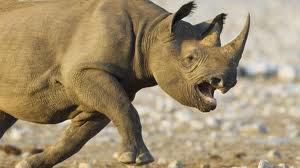
And rhinos are not known to be sensitive lovers.
Shortly after the fall of Rome, we see the rise of Feudal law, which was at its core less about religion than about property. Oh, the laws themselves were still mostly about God—an accusation of heresy was the best way to guarantee the death penalty, in fact—but feudalism introduced a chain of legal command. Landless serfs worked a vassal’s land in exchange for a tiny percentage of the crops grown; vassals took another percentage and passed the rest on to the lord; the lord held sovereignty over all his vassals’ land in the name of the king; the king bickered constantly with the church over how much he got to keep, but for the most part, it was a win/win situation for everyone. In times of poor harvest, the king got his cut regardless; if the lord came up short after that, well, shit rolls downhill. Vassals had few rights and serfs had virtually none. If a vassal felt himself abused by his lord, he could try to break the fief and pledge himself to another lord, but that was a really good way to get you and your whole family hanged for treason.
As the popularity of feudalism waned, lords took less and less of a direct hand in disputes, choosing instead to leave trials to juries. In medieval times, such juries were made up of people who knew the accused. There was no evidence presented at trial; jurors either knew the facts or had the duty to discover them (To the delight of historical murder mystery writers everywhere, jurors retained the freedom to investigate their cases until the 17th century). Trial by ordeal remained an important part of the justice system, particularly in heresy or witchcraft cases, but as the separation between Church and State widened, the burden of proof began to be more about facts than miracles.
Today, the legal system is arguably so heavily-mired in due process, evidentiary procedure and reasonable doubt that sometimes law and justice don’t seem to have anything to do with each other. And they don’t, really. Laws are concerned with rights in a legal sense; justice is more about rightness in a moral sense. And when local feeling favors the latter over the former, you get the dark side of justice—vigilantism. I would go so far as to say it has been the fear of vigilante justice more than the fear of crime which has created a need for a legitimate police force.
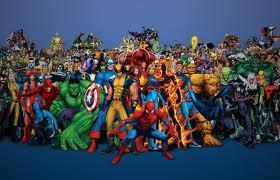
And a dress code.
While, deep down, most of understand the urge to take the law into our own hands and make the bad guys pay, we also understand why we shouldn’t and it’s not just because we look terrible in spandex. (Gosh, I want to put a picture here so bad…) Working outside the law to enforce the law is like working as a prostitute to promote virginity; it just doesn’t. I have no doubt that the vigilantes see themselves as heroes in the moral right, but then, so does the Klu Klux Klan.
I borrowed a lot from each of these eras when I wrote about law and punishment in my books. Most of them are represented in their ideal form (the glasses don’t get much rosier than the feudal law practiced in Arcadia), but none of them are perfect. The most important factor to consider when integrating laws into your world is that even the best-intentioned of them were written, interpreted and enforced by men. Or women. Or giant space-faring jellyfish. Whatever, they’re fallible, is my point. You don’t have to set all your books inside some dystopian legal wasteland, but do beware of setting up a system that is presented as incapable of making mistakes.


November 8, 2013
I is for Industry
I is for Industry
There were horsemen hard at work all around her in those fields, tilling and tending the land with tools uniquely-designed for them. The plows were great Vs of metal with long bars reaching back; one horseman would be harnessed to pull, and one would walk behind, guiding the rows into razor-straight lines. Grain was threshed by a long, spiky spiral pulled by three horsemen and raked up by a row of others into carts they themselves pulled. Some tall stalky crop was in harvest, cut with hooked sickles, gathered by hand and thrown into cone-shaped baskets worn like saddlebags.
Not everyone was a farmer. Horsemen came in small groups back from the reaching forest with saddle-baskets filled with branches, or with braces of game or simply with their runkas loosely balanced on their shoulders. But everyone was clearly working, everyone had something to do and everyone was doing it. –The Care and Feeding of Griffins
* * *
All you hard-working sons and daughters of bitches out there, I salute you…as I sit comfortably at my desk, typing with a cup of cocoa in one hand and my toes cozily nestled in the warm bellyfur of my old blind cat. I am the last person on God’s green Earth who ought to talk about industry, since talking is about as industrious as I get these days, but there’s only so many words that begin with I.
Now when I say ‘industry,’ you are perhaps envisioning some steampunkian nightmare—a blood red sunrise obscured by a forest of factory chimneys belching black smoke and flame over a perpetually shadowed city whose lugubrious citizens slouch along filthy alleyways from pub to pub until they stagger home and die of consumption. Not so! Or at least, not exclusively.
Industry had its beginnings when the first family clan decided Slag would make all the stone axes from now on and Oona would make all the loincloths (Ugg made all the boots), rather than have every individual manufacture all his own individual needs. Over time, Slag not only made all the axes, he also made the best. By specializing, superior products were made, which created a need for trade, which led to more manufacture, which meant they had to stop being nomadic and make permanent dwellings, which soon led to farming as opposed to hunter-gather lifestyles, and before you know it, we’re civilized. Great leaps in human history that have changed the face of industry include the potter’s wheel, the alphabet, the flux capacitor and the plow. Well…not so much the alphabet.

This. Changed. Everything.
So what’s the difference between technology and industry? Simply put, technology is the tool and industry is the work. In regards to world-building, industry is my umbrella-term for both the technological understanding of its people and the industries to which they apply themselves.
Depending on who you talk to, there are between three and five main types of industry, imaginatively named the primary, secondary, tertiary, quarternary and quinary. The primary type is production—farming, mining and logging—anything that takes resources directly. Secondary industries involves processing—refining, sawing, butchering—the middlemen who take raw resources and pass them on ready-to-use. The tertiary group provide services—not just merchants of physical goods, but also politicians, soldiers, doctors, teachers—anyone who provides a specialty skill. The fourth and fifth industries aren’t counted by everyone because some people are snobs; they are the knowledge/research industry, which includes scientists, and the artistic group, which includes actors, musicians and writers of paranormal erotica. The kinds of industries your people will be involved with will depend on available resources, education, and technological advancement.
Before we go very much further, let’s take a huge chunk of print-space and several minutes to talk about eras, because I use them as reference points and this entire series of articles is all about me. An era is any span of time that can be clearly defined by a specific attribute of those who lived through it. They’re also called Ages. For example, the Carboniferous Era during the Paleozoic Period was named for the many coal beds formed during this time.

Didn’t know this was going to be one of those sciency posts, did you?
The Stone Age is the first era of technological advancement. During this stage, tools were formed from unrefined resources—wood, bone, shell, antlers, gourds and various kinds of stone. Clay pottery is made and shaped by hand. Certain animals were domesticated. Agriculture was developed to supplement hunting and foraging, although it was likely limited to transplanting rather than cultivating wild plants. Simple dugout canoes allow for fishing and travel in shallow waters.
The Gold Age is marked by the discovery of metalworking, but precedes the discovery of smelting alloys. Gold, being soft enough to work with hands alone, is among the first metals to be worked but quickly proves useless for all but ornamental purposes. Tools made from copper, iron and tin supplant those made of wood and bone, although stone is still preferred for heavy use. The potter’s wheel is invented and pottery becomes much more common and useful. Agriculture and domestication advance together with the invention of the plow, yoke and bridle. The use of manure as fertilizer likely began here as well.
The Bronze Age marks the discovery of alloys, which were much stronger and more useful than base metals, which led to the first large-scale mining operations. Clothing technology takes a leap forward with the invention of the metal brooch—the first fastenings. Pottery has advanced to include durable building bricks and decorative tiles. The potter’s wheel metamorphs into the first wheels for carts and chariots. Writing begins to be developed about this time also as trade becomes a viable industry all on its own. The construction of sails makes coastal travel much quicker.

I hope you’re taking notes, because there will be a short quiz at the end of the article.
The Iron Age should be more accurately called the Steel Age, as iron has been around for a while, but since iron is both heavy and soft, its uses were limited. But with wrought iron and steel, tools and weapons were now considered nigh invulnerable. Iron picks allow mining in areas once thought inaccessible and the iron plow allows for more efficient land cultivation and large-scale stationary farms become more common. Ocean-going vessels create trade and travel routes across vast distances with the aid of the astrolabe and other navigation tools.
The Middle Ages could obviously be broken down into several technological eras, but in general is marked by the widespread use of printing and dissemination of literature, which in turn led to advancements in education, science, medicine and every kind of industry. Machines are invented and quickly become commonplace, but are all wind-, water-, man- or beast-powered. On the farm, windmills and pumps allow farmers to save time and labor, thus increasing their yield. Improvements in ship construction and navigational science make global exploration, trade and piracy both possible and lucrative.
The Industrial Age begins with the development of steam engines, refined fossil fuels and wholly power-driven machinery. Significant inventions made during this era are too numerous to mention, but perhaps the greatest strides were made in transportation (automobile, train, airplane, armored and propelled ships and submarines), mass production (automated assembly lines and push-button labor) and communication (telephone, radio and television). This era is also notable for a marked increase in pollution, which causes chronic illness despite impressive medical advancements.
The Information Age is set apart from the Industrial Age by the advent and adoption of the computer, which leads to a quantum leap in the innovation and efficiency of all technology. The first steps are taken into space. Communication satellites allow for the potential to connect all corners of the globe.
The Interstellar Age is a speculative future era characterized by a technology that allows travel between star systems. There are a number of proposed methods for accomplishing this, varying (according to scientists) from the merely silly—utilizing suspended animation or multi-generational ships—to the extremely silly—like faster-than-light travel or jump-gates. Other technologies associated with this era include artificial intelligences (sentient robots, androids or cyborgs), cloaking devices, force fields, tractor beams, mobile holograms, cloning and time travel. Lest you be tempted to roll your eyes, remember that televisions, webcams, personal tablets, cell phones and lasers were all elements of “silly” science fiction once.

Question 1.) During what technological era was the mathematical principle of the throculation capacity of base minerals first developed?
When deciding on the characteristics of the people who populate my world, I use these Ages as a general rule for how technologically advanced they are and what their industrial level might be, but it’s a pretty soft rule. The gullan in Olivia are steadfast Stone Agers; in spite of the fact that they are very much aware of modern human technology, they have no desire to adopt it. The Farasai in my Lords of Arcadia series know of metalworking, but aren’t built for mining, so leave that whole messy business to the Cerosan and rely on trade to keep them supplied with essential tools and weapons. In The Last Hour of Gann, the dominant religion forbids all use of higher machines, but the dumaqs would never consider themselves suffering for the lack.
For that matter, even when I am writing about humans, there’s a lot of wiggle-room. The ancient Romans, Egyptians and Mayans all produced engineering feats the likes of which we still cannot replicate. They were not marvels for their time; they were marvels, period. And of course, several cultures occupying the same world at the same time may be at different industrial levels. Never make the mistake of assuming all less technologically-advanced cultures were therefore inferior.
One last world of advice: Use your imagination. I may use the evolution of human industry as a guideline, but I’m certainly not married to it. Certain eras can be shuffled around or even skipped entirely if I want it that way. Technomantric, steampunk and post-apocalyptic worlds are all examples of settings that beautifully benefit from anachronistic industrial civilizations. So have fun! You’re a fantasy writer! Nothing is set in stone!


November 7, 2013
H is for History
H is for History
The archives were in the very deepest part of the mountain, to keep them away from idle eyes. The dreams of the sigruum were sacred, Sudjummar reminded her at her first and last complaint, and not for the whims of the curious. –Olivia
There were a number of hide curtains stretched across the room, separating it from another space beyond, and when Tonka went ahead of her to pull them aside, she followed. Here was the shrine to history and shame that she’d anticipated. Here were the walls hanging with bridles and, yes, blinders. Here was tack and saddles. Here was a rolled hide and a horsehair whip. And in one corner, there was something else, something like a metal saw-horse, very thin, with struts edging out both sides…“This is the house of our histories,” said Tonka, holding his palms upward to her. “And this is a part of our histories. But they are burdens for a chieftain to bear. And Morathi is correct. We must never forget.” —The Care and Feeding of Griffins
“What really happened?” Amber asked again, wrenching her gaze away to Meoraq. “What was the Fall? What the hell did God do to you people?” –The Last Hour of Gann
* * *
My mother loved books. Even as a child, she was an avid reader, cutting her literary teeth on Louis L’Amour, Robert Louis Stevenson and Agatha Christie. She fed her addiction working as a librarian for several years before getting married to my father and his books. Around about the time I was born, Star Wars came out and my mother’s boundless imagination found its north star. About 75% of the books occupying the twenty or so bookshelves in my parents’ house are science-fiction/fantasy. She read a lot of bad ones, many good ones, some great ones. If you asked her what the difference was, she was always quick to say it wasn’t the story. An old story in the hands of a talented writer could be great; a great story in not-so-talented hands could be awful. The difference, she said, was this: A bad book begins and ends with the words on the pages. A good book gives you the feeling that it began long before you ever started reading. But a great book goes on long after you stop.

Pictured: The world’s most excellent nerd.
I understood what she meant at once. Even in fantasy settings (or perhaps I should say especially then), we want our worlds to have that sense of permanence. All the dragons, demons, aliens, sorcery and starships aside, we want our worlds to feel real. Giving that world a history fixes it at a point in time and builds a foundation on which we writers can then hang a future. Whether it comes in the form of a five-page expositional lecture on the Age of the Dragon Wars or a throwaway line of dialogue as your heroes approach the walled elven village of X’iim to the effect that “they’ve built them like this ever since the massacre at Kelathia,” history suggests itself in endless ways. Prophecies, prejudices, alliances, legends, traditions, taboos—all elements of a sub-conscious history.
Not too long ago, I snubbed the makers of the Riddick franchise for their lackluster efforts at ecosystem design, but I have to admit that one thing those same people do well is historical subtlety. In this last movie, they’re so cocky about it, they do it twice. On the lifeless and impossible planet on which Riddick finds himself marooned, he finds the ruins of what might have been a vanished indigenous civilization, reduced to a cave-like chamber of angular and imposing design. The stark, monument-like style of the surviving relics in that dark, echoing chamber hint at a past that Riddick, of course, is not remotely interested in. Nor should he be. That scene existed to foreshadow how easily and how completely people could be wiped out on that planet. Riddick was not there to study extinct cultures or bemoan their loss.
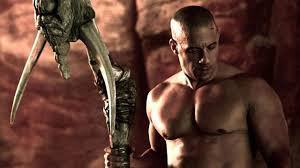
Pictured: Not an anthropologist.
Later on, he stumbles upon an empty merc-station—a construct alien to that planet, built so that spacefaring folk of the distinctly seedy kind could touch down, make repairs, stock up on supplies, breath unrecycled air and move on. None of this had to be explained (although it was). It was perfectly obvious what it was and how long it had been there, and it amused me no end to imagine what the next group of mercenaries who happened along would think when they saw the condition in which it had been left.
I tend not to write books that are fully set in fantastic or futuristic worlds. My heroines are human, born in modern times and imbued with modern sensibilities, who find themselves thrust into alien circumstances. Familiarity breeds contempt, they say, or at least indifference; it takes an Outsider to marvel at what is strange and explore what may be commonplace to another culture.
On the other hand, only someone who has been raised in that fantasy-world can elicit the kind of powerful emotions that come from exposing the highs and lows of an extraordinary ordinary life. As an example, I give you one of the best movies ever made: The Dark Crystal. In particular, I give you Kira, one of perhaps only two Gelflings left in the whole world. She has been raised by Pod People—a child-like and vaguely trollish race who live very much in the moment. When reluctant hero Jen, our Outsider, visits Kira’s village, he is overwhelmed by the revelry and spontaneity of their celebrations, but just as the party is getting started, it’s cut short by an attack by monstrous beetle-like servants of the evil Skeksis. The two Gelflings escape, but the Pod Village is razed and its inhabitants enslaved. As a devastated Jen lashes out in grief and anger, Kira comforts him by saying simply, “The Garthim have always come.” Nothing else in the whole movie illustrates the disparity between the two of them quite so well or so beautifully—earthy Jen, sheltered from violence; ethereal Kira, inured to it.
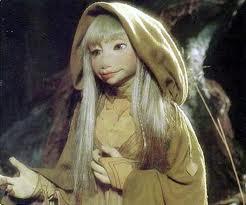
Pictured: One cold bitch.
Very soon afterwards, the Gelflings discover some Gelfling ruins and scene in which they explore these overgrown remnants of what should have been their own culture is one of the most moving in the entire film. My own favorite part is where Kira ascends a vine-covered throne and is quietly amazed when she fits in it perfectly. Not a word is spoken, nor is one necessary. These are puppets and they are emoting the hell out of that scene.
Of course, these are examples of forgotten history, which is to say relics that are discovered, but not necessarily explained. Another way to bring your world’s past into the present is with the aid of a historian. You’ve seen them. They’re usually some wizardly type in a musty old library, pouring over massive leather-bound books and ornately-capped scrolls, always ready to furrow his brow and blather on for four or five minutes about some obscure prophecy that makes absolutely no sense and is of no real significance but will nevertheless become self-fulfilling due to the bad guy’s efforts to circumvent it. Or it’s the hermit living in a cave on the ass-end of nowhere who is the only one on the planet who knows the secret of gunpowder/martial arts/cartography/the rubik’s cube and therefore has to be protected by the hero until the knowledge can be passed on in such a manner as to save the day. Or it’s the fallen aristocrat living in disgrace under the new, evil regime who has not seen the princess since the night she was born, yet recognizes her at once and immediately sobers up following a 20-year drunk-on and gathers an army to overthrow the enemy and restore the true throne. Basically, anytime some wizened old fart opens his mouth in front of the hero, we’ve found our historian.
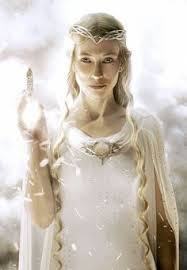
Pictured: A wizened old fart.
Of course, history isn’t just for medievalish fantasy worlds. In the 2002 film adaptation of The Time Machine, the part of the historian is ably played by a holographic librarian in a few broken panes of glass. Frank Herbert’s Dune series is one great big history book with some giant sandworms thrown in to spice it up (get it? Spice?). In fact, some of the best (and worst) science-fiction is written with the premise that we are doomed to repeat history unless we learn from it. The fact that it is fictitious history makes whatever socio-political message accompanying it no less relevant.
So essentially, there are three kinds of history when it comes to world-building: the kind that gasps, “What happened here?” the kind that asks, “Why is this happening?” and the kind that says, “This happened. What have we learned?” And, as is so often the case with world-building, success is not measured by how thoroughly you, the writer, answer the question, but by how much they, the readers, think about the answers.


November 6, 2013
G is for Gods
G is for Gods
“In the beginning, all was emptiness and Ko’vi.” O’bek’we reached out to tap T’aki, who had hunkered off by himself and looked bored. “And Ko’vi commanded light and set it apart from darkness.” –Cottonwood
The Morathi’s face grew solemn. “With gods, there is always equal trade. Always. Even with those gods we perceive and name as evil, there must be equal trade. Mortals may recant, may lie, may even kill to prevent an accounting, but gods are bound and their honor may never be broken. So the whim of Quiabe can never rain too heavily upon we who serve him, for if we have met him fairly, he cannot dissemble.” He leaned over his table, putting his eyes closer to a level with Taryn’s, to add, “But you do not serve him, human, and whether that renders you armored to his whim or bared to it, I cannot say. And ‘tis not for me to ease your mind in any matter, but I will put to you this question: If Quiabe were to meet with you this night, to stand before you in the flesh of the immortals, how would you answer his expectations?”
“Gods don’t have expectations,” Taryn said. –The Wizard in the Woods
* * *
Let me just start out by saying that I am not a theologist and it is not my intention to preach or condemn any faith (or lack of same) my readers may have. The purpose of this article is to talk about religion as it pertains to the creation of a fantasy world or alien culture, not as it pertains to anyone at all here on Earth. If I use real-world examples, it is strictly to illustrate a point, not to proselytize.
Today, boys and girls, we’re going to talk about gods. Little g. In the general sense.
I hardly think I need to explain why you should consider religion an important facet of any culture, so we’ll skip that part and move on to how I’m going to do it. Having given the matter my attention whilst diligently crushing candies for several hours, I have decided the best way to begin is with a quick runthrough of the various religious structures. Keep in mind, this will be done in the broadest possible terms. I realize each category can be divided down into numerous specific definitions, but I have a doctor’s appointment in eight days and I don’t want to miss it. So here, in no particular order, are the most basic categories of religion.
Atheism and Agnostics. Now, I can’t think of a single society which has no concept of deities or an afterlife, but I imagine that for as long as those concepts have been around, individuals have removed themselves from it. In fact, the word theism, which has come to be used as a stand-in word for religion, was invented by ancient philosophers so they could debate religion in an abstract way without having to acknowledge the validity or even the existence of any particular god. Not all of those men were atheists; simply questioning God or denying a church’s authority does not make you an atheist.

It makes you a heretic.
Atheism is not a lack of belief; on the contrary, it is a very firm belief that there is no God, no spiritual plane and (usually) no soul. This differs from the oft-confused agnosticism, which implies an openness to the idea of gods or soul, provided they are presented with evidence of existence. (An agnostic friend of mine used to be fond of saying that, like Bigfoot, God might actually be out there, but Bigfoot at least left footprints.) Also to be considered here is deism, which can be described as believing in God, but not in church.
Naturalism. This is a handy word for summing up those religious practices which incorporate more magical or ritualistic elements, rather than dogmatic principles. Here, we find fetishism (the practice of making inanimate objects and imbuing them with power), shamanism (the practice of certain people acting as intermediaries for a greater and largely unseen spirit world) and totemism (the practice of taking strength or guidance from a guardian source, primarily spiritual, but which may manifest as a physical being), but perhaps the best known is animism, which is the belief that everything has spiritual properties and a soul. We get the notion that owls are wise and foxes are sly from animism.

And octopuses are not to be taunted.
Naturalistic practices also blend together nicely, forming the backbone of a belief system which may or may not include an overarching god or gods. If you’re interested, you can find a ton of information on animal symbolism, as well as other good stuff at www.whats-your-sign.com. If you’re like me and would rather turn pages, I recommend Animal Wisdom by Jessica Dawn Palmer (beautiful but pricey) or the Pocket Guide to Spirit Animals by Dr. Steven Farmer (brief entries but lots of critters). For the spiritual side of plants, check out http://www.earthwitchery.com or read The Complete Illustrated Encyclopedia of Magical Plants by Susan Gregg. If rocks and gems are more your wizarding world’s thing, read Cunningham’s Encyclopedia of Crystal, Gem and Metal Magic (or, heck, any of his naturalistic magickal reference books).
On the flip side of the animism coin (all things have their own individual soul), we find pantheism (all the universe is one soul). Fundamental pantheists do not believe in a personal, man-like, divine being, but more of an omnipresent, transcendent force. Frequently, the idea that this force alone exists and all the rest of what Man perceives is illusion accompanies this belief. Communing with this force often forms the backbone of pantheistic faiths, through meditation or ritualized forms of exercise, breathing or sex designed to alter mortal consciousness and bring the practitioner closer to God.
One God or Many? When it comes to organized religion, most of us imagine something that fits in one of the following categories: monotheism (There is only one religion. Ours. Yours is demon-worship.), henotheism (We worship our God, you worship yours.) and polytheism (You have some nice gods over there. Mind if we borrow a few?).
Dressing up the basic cut of your belief system are theological accessories—concepts that are not religions in themselves, but which can be found adorning all the most fashionable dogmas. Little things like an immortal or perhaps mortal soul, reincarnation, heaven and/or hell, divine judgment and/or punishment, sin and repentance, saints and martyrs, prophets, priests, a theocratic hierarchy, angels and demons and ghosts, oh my.

Ghosts: The dangly earrings of theosophical esotericism.
Now that you’ve settled on a belief system for your world, it’s time to populate your pantheon with gods. This can be a daunting task. Of course, you could always go the omnipotent, omnibenevolent, omniscient creator god route if you want to. It’s easy and relatable. Or you could flesh out (so to speak), your pantheon with some archetypes—a trickster, a seer, a lover, a warrior, a deity of the hunt or harvest. www.godchecker.com has what I consider the ultimate database which you can browse by region or by archetype, although they present little more than names and attributes (with tongue firmly in cheek). There are far more in-depth resources available if you already know what you’re looking for, so my usual technique is to browse godchecker to find a promising lead and then google for the real research.
Which brings me to my favorite way to use deities in a fantasy world: reinvention. In my Lords of Arcadia series, my gods originated on Earth from a variety of pantheons before coming to Arcadia as refugees. I changed their names (very slightly; I wanted them to be recognizable) and gave them new approaches to their old duties—Anubis, as Anu, is still the god of death, but in his Arcadian aspect, he ferries souls to the afterworld rather than weigh their worthiness. I like to see fresh takes on old myths (If you have not read American Gods by Neil Gaiman, stop reading this immediately and go read that), provided they are handled with respect.
One last point to ponder and then I’ll put religion to rest: There are dozens of major religions on Earth, each of them with hundreds of distinct subsects. The idea of a whole-world religion is bizarrely commonplace in fantasy and science-fiction, but profoundly unlikely. Depending on the god in question, worshippers may be more or less tolerant of other faiths.


November 5, 2013
F is for Food
F is for Food
“And when I began to cook the brains?” Meoraq inquired, pointing back at the satchel with his scraper.
“Soup.”
“You thought I meant to feed you brains?”
“How is that more disgusting than what you always feed me?”
“Example!” he demanded, laughing through his incredulity.
“How about all the heads?” Amber shot back, pointing at the two in the fire.
“The head is the best part,” he replied. “I save it for myself and allow you to share it.”
“Okay, marrow. Marrow is horrible.”
“The food of lords and abbots,” he countered. “Delicious.”
“Liver.”
“Ah, well. Liver is good for you.” –The Last Hour of Gann
* * *
I love food. I love cooking it, I love watching other people cook it, I especially love eating it and I even love writing hypothetically about it. I have more fun researching the food in a new novel than I do practically any other aspect (except maybe the sex). As a matter of fact, I have so many note regarding the recipes and meals in my Arcadia series that I could probably slap together a pretty respectable cookbook.
How important is food to worldbuilding? Well, look at it this way. In the great melting pot of America, when people of many different cultures may speak the same language, dress in the same clothes, worship and work and rear the children in essentially the same manner, food remains unique to that heritage, remains in fact defined by that heritage. When Cris asks me what I feel like for dinner, I don’t say pasta or burritos or stir-fry. I say Italian, Mexican, Chinese. In the same way, I want my fictional world’s food to be representative of that culture. When a fan tells me, “I read about those Farasai sticky pies and just had to make some!” I get a glow that compares to nothing else I know.

I never said it was a healthy glow.
Where to start, you ask? With the foods that are available. In today’s modern Western world, our technology allows us to grow an astounding variety of fruits and vegetables, preserve or refrigerate them, and ship them all over the world! If I want strawberries in December or pumpkin pie in May, all I have to do is go to the store and get some. In a civilization equally advanced in this regard, there’s no reason your non-humans wouldn’t have the same advantages, but in cultures without that technology, things are very different.
One thing my research has taught me is that pre-agrarian cultures—people who hunt and gather rather than farm—subsist on very, very few foods. After all, when you don’t cultivate edible plants, you tend to rather quickly run out of them if you have a very large population, so they’re not around long enough for you to get used to having them for supper. Roots, berries, certain edible flowers or leaves and occasional fruit fill bellies with reliable abundance for most of the year, but all that ends when winter rolls around. Then late autumn nuts and perhaps dried mushrooms round out a diet that is, by necessity, mainly meat and fat. Keeping in mind that a hunting expedition was futile far more often than not and that hunters might be gone a very long time, any animals that were killed were fully utilized. More than just meat, these hunters would have eaten every edible part—brains, bowel, head (with eyes!), feet, kidneys, liver, tripe, lung, stomach, heart, testicles, blood, fat, marrow, even spleen and pancreas! Not the tastiest menu (but I’ve had plenty worse) and a diet that is mainly meat and fat leads to its own problems—parasites, protein toxicity, atherosclerosis and a high risk of numerous diseases, including heart disease and gout.
This is why, almost as soon as our proto-human brains realized that when you put seeds in the ground, food grows, we were growing it. With agriculture comes greater variety and a more nourishing diet. Two thousand years ago in Egypt, whose climate and fertile soil made it the ideal agrarian location, the staple food was bread, made from a variety of grains and sometimes mixed with yeast, salt, spices, milk, butter and eggs; bread was made patted flat, shaped into rolls or even into thick loaves stuffed with eggs or other fillings. The rich had game, honey and fruits, but even the poor ate all kinds of fish from the Nile, as well as beans, chick peas and lentils, leeks, garlic and onions, and dates, both as fruit and fermented into wine.
Sounds like a lot of food, doesn’t it? Note that I could list it all in one paragraph. But at least that’s a nutritious and relatively varied diet. Elsewhere in the world, people make do with even less. For example, many tribes in Papua New Guinea still eat mainly a kind of starchy yam, only hunting forest game or very rarely slaughtering a pig for special feasts. “Don’t you ever get tired of yams?” the travel guy asked while visiting for dinner. “Tired of food?” the Papuan replied in confusion.
Most agrarian cultures are somewhere in the middle, though. For example, the indigenous Midwestern tribes ate corn, beans and squash, supplemented whenever possible by fish, fowl and game. The addition of savory herbs, seasonal berries and honey made for bounteous and tasty meals, but yeah, pretty much just corn, beans and squash.
The domestication of livestock adds a regular source of meat (where hunting may be too unpredictable), and potentially some dairy products as well. Wild aurochs, boars, game fowl, goats and sheep dumbed down over many generations into the cows, pigs, and chickens we know today. The goats and sheep haven’t changed much.

Okay, some of them have changed.
Of course, even without livestock, there is a cheap and readily available form of protein enjoyed by some 80% of Earth’s nations. Why yes, I am talking about bugs!
Most fantasy worlds tend to mimic a fairly medieval template—not too much technology and not too little, especially if you augment what there is with some sorcery—and are fed on a fairly medieval diet: about six to ten staple crops that include at least one starchy root, one leafy green, one cereal grain, one sweet fruit and one source of alcohol. Add to this one form of livestock (maybe two, probably not more than three without an established trade route to other lands) and whatever you get out of them, be it meat, wool, hides, labor and/or dairy products. Spices, herbs and teas would largely depend upon local plants or, again, established trade routes.
Once you know what you have to work with, you can start planning your menu. If you’re looking for inspiration or just something to try in place of the usual Monday Night Meatloaf, the internet is just bursting with helpful ideas. Some of my favorites include www.godecookery.com, http://www.recipewise.co.uk (for real fantasy food worldbuilding examples, check out recipewise.co.uk/tea-in-the-hobbit), and www.nativetech.org/recipes/index.php For international cuisine, epicurious.com/recipesmenus/global/recipes is my goto source and I cannot recommend Andrew Zimmern’s Bizarre Foods enough! If you’re curious about offal and whole animal eating, www.nosetotailathome.com/offal-guides/ is a great place to start; if books are more your thing, I heartily recommend Jennifer McLagan’s Bones, Fat and Odd Bits (note those are three books), which are chock-full of modern recipes as well as historical information and folklore. If bugs caught your eye, check out www.insectsarefood.com, edibug.wordpress.com or www.flapest.com/recipes.aspx, although I must say, nothing beats first-hand experience.


November 4, 2013
E is for Ecosystem
E is for Ecosystem
Taryn put her pen down and smiled around at the camp in question, deeply satisfied by everything she saw. She had a nice little copse of trees maybe a mile across behind her tent to block the winds that combed constantly through the plains, and it was full of wonderful things like firewood, and even some late-season berries and wild grapes. Two hundred paces before her (she’d counted them off assiduously because her Wilderness Survival Handbook had instructed her to do all her laundry and toiletries two hundred feet from her water source, and this book was rapidly becoming her Bible out here in this strange new world), was the river she had known she’d find. The greenbelt that had led her to it was on the other side and the waters were wide and fast-flowing, but there were fish leaping all over down there and as soon as she figured out how to tickle them out onto the bank, she would be one happy and well-fed woman. Not that she was starving now. A few rocks gathered from the riverbank and her trusty slingshot had eventually brought down two of the pheasant-like, yellow-breasted birds and both she and Aisling were currently stuffed just as full as could be. Beyond the river and the thick growth that grew on the far bank were the mountains, rising jaggedly into the low clouds and just as pretty as any postcard. There were numerous little courses running off the rock and into the river, and not far to the east, the distant mutter of some truly magnificent falls kept her easy company. It was a good spot. It was the best spot. She was going to be okay. –The Care and Feeding of Griffins
* * *
Okay, so we’ve had a couple of fun articles (death is fun, right?) and it’s time to get serious. For those of you who have forgotten fifth-grade science and those of you whose notes for that period consist of several dozen heart-and-flower adorned repetitions of “Mrs. Tommy Badgerbottom” and doodles of cheeseburgers, let me refresh some memories. An ecosystem is the balance that is formed by the living and non-living things of a specific environment. Plants, animals, water, weather and minerals all combine to function more or less as a single “typical” system. Pretty much any habitat in which organisms are dependant upon the conditions of that habitat for survival and whose life cycles in some way maintain the function of the habitat can be called an ecosystem. In this way, you get a river which is part of a rainforest which is part of this little ecosystem we call Earth. Humans are also a key element of ecosystems, much as we like to pretend we’re not—

—but for the purposes of this article, I’m just going to talk about ecosystems as they pertain to worldbuilding.
“Sweet mother of pie!” I hear you cry. “Who cares about the stupid ecosystem? The story is about an alien bounty hunter and his sexy target getting marooned on a hostile planet! I just want them to go at it like angry minks, not gawp at the delicate balance of life in the indigenous watershed!”
Okay, first off? Use your inside voice. Secondly, good word usage. And third, good books are rarely good because of the plot. By now, every possible plot has been done and twisted and pulled apart and sewn together and done some more. Good books are good because they come to life in the reader’s head, and that only happens when there’s a thoughtful approach to the story, real emotion in the characters and depth to the world around them. When you’re writing on Earth, that’s one thing; we all tend to take Earth for granted.

Sadly.
But when you’re writing on another world and especially when your characters interact with that world, that world must be as fully-developed and alive as any other character or it just doesn’t work.
Example. I saw Riddick when it came out, because I love B movies (and the Riddick franchise is as B as they come. Spoiler alert: B does not stand for blockbuster). I liked the first two well enough as eye candy, but never really got into them, and I expected the third to be about the same. About halfway through the movie, my suspension of disbelief was on the floor between my feet. Oh, Vin Diesel is still a mumbly badass and even gets naked once, but I couldn’t stay in it. All the testosterone-soaked fight scenes in the universe can’t make up for the fact that that planet could not support the kind of life it was supporting. We saw four animals—five if you count a haunch of unidentified meat—one eel-like thing that lived in what I presumed to be sulpheric pools, two top-tier predators and one flying scavenger. Oh, and one of those top-tier predators? They come by the millions. So I have a question for you, makers-of-Riddick: What the hell were they all eating? Don’t say each other, because there was none of that onscreen. There was no prey and not a lot for prey animals to eat either. Just millions of huge bitey-things milling around on a lifeless world, waiting for aliens to drop by. If this sounds familiar, that was also the plot of the first movie. Thirteen years and they couldn’t build a better world!
Who cares, you stubbornly mutter? Well, I care! When I throw down ten bucks to see a movie, I want two hours of in-the-movie, not two hours of oh-give-me-a-break! More importantly, when your readers throw down their hard-earned cash, they want to fall into your vision, not sit there thinking, ‘What are all those things eating when no one crashes on the planet?’ Your world is more than a static painting on the back wall of the stage, it is the world your characters live in. It has to feel real. It has to work.

Please stand by while the author takes her medication.
Okay. So ecosystems are made up of non-living elements like soil and other minerals, availability of sunlight and water, and climate, as well as living organisms. The living side of the equation also maintains its own balance as part of three separate groups: producers, consumers and decomposers. Producers are mainly your plants, but on an alien world, it could be an animal too; these organisms make their own food by absorbing nutrients from sunlight or conceivably from the soil or whatever non-living element you feel like giving them. Consumers go get their food; these are mostly animals, but occasionally can be plants who either eat plants, other animals or both. Finally, the decomposers, which are all the dead plants and animals who slowly breakdown and revitalize the soil. If any link in this simple chain is broken, the whole ecosystem collapses.
When you lump a bunch of compatible ecosystems together, you get a biome, which are mostly categorized by three things: plant type, plant density and climate. Just remember that a planet is made up of many biomes. Although your entire story may take place in one specific area, avoid creating desert worlds, ice planets or forest moons. (I hope you’re reading this, George Lucas.)
There are a lot of different systems for categorizing biomes, but I use the WWF system. Not that WWF. The World Wide Fund for Nature. You know, the panda people.
WWF recognizes 14 terrestrial (meaning land, not Earth) biomes—three kinds of tropical forest, two kinds of temperate forest, boreal forest, four kinds of grassland, tundra, woodland, desert and mangrove—which can be further divided down into over 800 ecoregions—no, I’m not going to list them. Additionally, there are a number of freshwater and saltwater biomes, but I’ve never needed to study them beyond what it took to successfully raise marine animals in Zoo Tycoon 2.
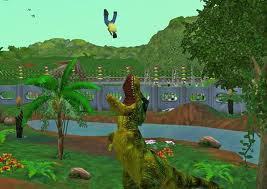
Monitoring guest safety at the park was somewhat less successful.
Biomes act as a ready-made template for any fantasy or alien setting, giving you, the writer, a good idea of the biodiversity you should have, the kind of weather your characters will be trudging through and what biomes they’re likely to run into if they keep trudging long enough. Do you have to fill pages of valuable printing space with descriptions of each kind of flowering fifflepod or grazing grubsnak your characters encounter? No, of course not. But the fragrance of a fifflepod wafting on the breeze or a herd of grubsnaks wading through the moonlit grass can add rich atmosphere to a poignant moment. Even better, a ferocious fanged fnarl taking out an entire herd of bawling grubsnaks in Chapter Four really revs up the tension when the heroine faces off against one in Chapter Eight. The idea is to use your world’s environment not merely as a backdrop, but as a key element of the story with real consequences for your characters.


November 3, 2013
D is for Death
D is for Death
Horumn hooked her hand through the air and glared at her. “The dead are still close,” she said. “Do not call her by name. She was cruel enough in life and death…death can change a soul.” She grunted, looking warily around the empty cave, then took the lantern to a hook on the wall and hung it up. “Of course he didn’t let you go, fool. The dead are hungry, the grave is cold, and your little son swims helpless below your heart. Ha! Your mate will let all you frogs run together when you stamp your foot, and abandon the home of his ancient fathers for your dreams, and pluck down the moon should you ask for it with water on your naked face, but some things he will not risk. Nor should he.” –Olivia
He was careful with his brother’s body as he turned it. Shuiv’s blood was slow, his life gone, but he would not truly be dead until his funeral pyre had been consumed. While he could still feel, he deserved no less than the highest respect. –The Last Hour of Gann
* * *
I’m typing this in my aunt’s kitchen, a thousand miles from home, a 44-oz cup of Diet Coke tucked comfortably beneath my chin and a houseplant of some broad-leafed variety close tickling my left ear. It is a pretty big plant—more a floor-plant than a table-plant, I would think—and not very interesting to look at, although there are stalks here and there to suggest it has flowered at some point in its life. Its leaves are mostly green, except at the tips, where they are nearly all withered, cracked and brown. The stalks that were maybe flowers in its season are all yellow and dry. Several leaves are no more than ribbons of crinkled decay amid the green. I will not say the plant is dying, at least not where my aunt can hear me. She, like most of my relations, can grow a garden like something you’d see in a seed catalogue…of course, I can’t see her garden now. The season is past. It’s dead. The only plant left for her to tend is this one in the kitchen and she does tend it, stubbornly watering and fluffing and whisking away the leaves that drop so the live ones don’t see them and freak out. Did she work this hard, I wonder, to save her garden plants? No. After the last harvest, she tore them up, root and stalk, and mulched them to feed next year’s cannibalistic crop. Their time was done, she explained, so cheerfully. They had fulfilled their purpose and served no new one by cluttering up her yard. The plant on her kitchen table serves no purpose I can see, except to sit there and be a plant, but she fusses over it anyway.
My aunt’s kitchen table is a good place to write about death, I decide. Or at least, to write about how our reaction to death exposes certain facets of our personality. And isn’t that what worldbuilding is all about? Not the setting, but the emotion it evokes?
I think it’s safe to say that there is no human culture on Earth, past or present, that does not in some way mark the passing of one of their own. Even in the animal kingdom, an awareness of death and acts of grief have been observed in many species. We inhabitants of this old rock, Earth, despite our infinite diversity, have two experiences in common; human, animal…houseplant…we are all born and we all die.

All dead.
This is not an article about dying. I know, the title is deceptive. This is not even necessarily an article about death. I don’t think I can be trusted to speak intelligently about something I haven’t experienced. This article is about our reactions to death, or rather, the reactions of your fictional non-human race to death.
Granted, your book may never need to deal with this issue. I’m told that many people consider death to be something of a downer and not everyone wants to read about it, particularly in a romance, which is what they tell me I write. Intriguing notion, that—a book without death. I have to admit, I’m as incapable of writing a book without killing someone as I am writing a book without using words. But at the risk of repeating myself, it’s not death I’m writing about; it’s how my characters fight death, face it, even embrace it, and it’s about what comes after.

No.
I don’t mean the afterlife (although I do dip my pen in that ink now and then), I mean after death. There is—if you will permit me a small show of morbid enthusiasm—a wondrous variety of funerals to be found on Earth. From the ancient Egyptians, who mummified and entombed their loved ones with everything they might need in the afterlife, to modern-day Indonesion villagers, who keep their ‘sleeping’ relatives in bed (sometimes for years) until they can pay for the elaborate burial; from the Navajo, who require spiritual cleansing after touching a body, to the Wari, who make people-jerky out of their dearly departed and nibble on it whenever they get to missing someone; from women paid to keen and wail at ancient Roman funerals to the musicians who march in jazzy New Orleans funeral parades; whether you’re mourning a loss or celebrating a life, there are endless ways to deal with death. However, the feelings of grief, loss and love that accompany it are universal. Stay true to that and, no matter how alien the rest of your world may be, your story will resonate with your readers.
If you, too, have a morbid interest in death customs but don’t know where to start indulging it, here are a few ideas: There is a marvelous book on my shelves at home called Celebrations of Death by Peter Metcalf, which covers some of the funereary practices of various cultures here on Earth. Other great reads are Death Warmed Over by Lisa Rogak, Funeral Customs by Bertram S. Puckle and The History of Death by Micheal Kerrigan. If you happen to be the area, you can take a tour through the Museum of Death in Hollywood, the National Museum of Funeral History in Houston, Texas, or the Bestattungsmuseum Wien (Funeral Museum Vienna) in, duh, Vienna, Austria. I get a lot of my general information online from www.sacred-texts.com/etc/fcod/ but for the really unique stuff, you have to get specific; just plug “funeral customs around the world” into your search engine and prepare to spend the day reading.


November 2, 2013
C is for Clothing
C is for Clothing
The fact that he wore clothes had a way of wanting to boggle in Amber’s mind, as if the toughness of his scales rendered further covering superfluous and never mind the man’s modesty. – The Last Hour of Gann
* * *
Today is National Pet Peeve Day or at least it would be if I was in charge of making up holidays. So in honor of this completely fictional festival, today’s NaNoWriMo post concerns a subject that has been eating my angry cheese for years.
I want you to stop and think of the first, say, ten sci-fi movies (this is annoying no matter what genre it appears in, but is especially cheesesome in sci-fi) featuring a blatantly inhuman character. I don’t mean human with pointy ears or ripply forehead, I mean in-your-face-mutha-ain’t-human character. Write the names of these characters down if you know them or just the movie if you don’t.
Now circle the ones that wear clothes.
Yeah. Not a lot of circles.
One can argue that the xenomorphs from the Alien franchise have no reason to wear clothes and I’ll give you that one, but they’re not all armored killing machines with a hive mentality. Think about it. E.T.? Chewbacca? The ewoks wore hoods and jewelry, but let their cute little teddy bear junk hang out. (And here I realize I’m exposing my love of bad movies a little more than maybe I should, but…) Station, of Bill and Ted’s Bogus Journey fame—the smartest being(s) and greatest scientist(s) in the entire universe–walked around bare-butt naked. Alf lived with humans, with free access to laundry, and still struts it in the furry buff more than half the time. As for the other half, is there anything more fundamentally wrong than a hairy guy in a loud Hawaiian shirt and no pants?
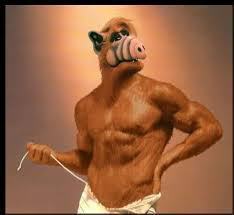
Apparently, there is.
The aliens from Cocoon, War of the Worlds (every version) and Independence Day all mastered interstellar flight technology, but not pants. And Signs? Okay, you’re an alien race that melts in water, traveling to a planet whose surface is 80% water and where 80% of the natives live by water and, indeed, where it is probably always raining somewhere. A rain-slicker and some rubber boots and Earth is your smorgasbord! You might think I’m willing to overlook the prawns from District 9, because they’re in a slum and either it’s go nude or salvage traffic vests out of the trash, but look closely at that scene where the humans cut into the mothership. All naked! What, did we interrupt the orgy, guys? The Predator and those blue bunnymen from Avatar barely qualify as dressed. Movies like Battle: Los Angeles and Battleship were derptarded for many reasons, but by God, they dressed their aliens! (“You sure talk about movies a lot for someone who writes books, R Lee.” Yeah, yeah. But even if you haven’t seen those movies, you’ve probably absorbed enough peripherally to know what I’m talking about, whereas naming books is pretty hit or miss).
Why do we (humans) wear clothes? Many reasons. To keep warm. To protect our skin from sun, rain, small bugs and most of the filth that Nature flings at us on a day-to-day basis. To attract a mate. To show dominance or intimidate others. To form the foundation for pockets so we can carry our keys around. To protect the furniture we sit on. To fit in amongst our peers and show conformity. To hide our genitals so God won’t know we know we have them. To coyly conceal our genitals so others will want to see them. To have something to do on Laundry Day. Mostly for the pockets, though.
I don’t remember where I heard this, but someone somewhere once said/wrote, “Successful fantasy is not about the creature looks, but how it lives.” And apart from your creature’s physical features, his or her clothing is what your human counterpart is likeliest to notice first. And if you omit it, your human ought to notice that too. For example, in my Arcadia series, I thought it would be cool (so many of my best and worst writing decisions begin that way) if the Cerosan (my minotaur-ish race) wore no clothes, in part because they have fur, but only in part. As my notes say, it is “…to defiantly distance themselves from what they perceive as human standards of sentience…”
Yeah, I talk like that even to myself.
What that note really did was expose my own non-human bias. Humans are intelligent; we wear clothes. Animals are not and do not, unless they are dressed by humans, who then project imagined human qualities onto them. “But R Lee!” you cry, “My little Wufflekins loves her outfits!” She might. Or she might just like the attention that comes with being dressed? Bottom line: when we dress ourselves, our clothes become an extension of our personalities. And when we dress our pets, their clothes…become an extension of our personalities.

Our borderline personalities, in some circumstances.
And that’s why aliens in movies don’t wear clothes, in my uneducated opinion. Dressing them humanizes them. Most alien movies want to keep that Us vs. Them sentiment strong. I mentioned earlier that Battleship and Battle: Los Angeles dressed their aliens, but they did so in identical uniforms with tinted helmets, creating in effect a faceless, unreasoning swarm. There remain exceptions, sympathetic aliens who nonetheless go nekkid (I cannot stress enough that if I had to spend any length of time in Station’s company, I would take my own pants off to put them on him), but this I suppose I will have to chalk up to aesthetics. Chewbacca can rock an ammo belt, but I doubt he’d look as formidable in Han’s black-and-white smuggler’s togs.
In your book, as in real life, it’s about keeping your attire appropriate to the situation. Consider anatomy; hooves, spikes and horns all present their own difficulties when getting dressed. Consider the environment; wispy robes are a nightmare in the woods and form-fitting layers are sweltering in the desert. Consider the culture; religion, occupation and national pride all have an influence on what we wear. Consider real-world examples; I have several books illustrating costumes from around the world and through history and refer to them often, either for inspiration or just to know whether you call that thing a kirtle or a surcoat. In more medieval/fantasy settings, definitely consider available materials; Egypt used linen and Germanic tribes used wool not because they looked spiffy, but because they had nothing else!
And finally, as with all the tips and tricks of worldbuilding, use an editing eye when describing attire. Introduce information naturally and only where appropriate. Never stop the story for a complete head-to-toe tour of a character’s outfit (sorry, Tolkien. You know I love you, but it had to be said).


Weekend Writer Warrior 11/2
The Weekend Writing Warriors blog hop is a weekly event in which writers are invited to share eight sentences from one of their works for other writers, readers and random bloggers to read, critique and comment on. Visit their site by clicking on the button below for a list of other participating writers and share the love! Today’s 8 comes from Pool, my current work-in-progress, in which I get back to my B-movie horror roots and write about monsters who live underground…and die there.
Grief, like evil, had no place among the Hodel clan any longer. Pool nurtured his, but the distress it caused his people could not be ignored any more than the fact that Echo was dead and death meant bad meat. He fought that as long as he could, but grief makes some men want to cleave to familiar rituals—as true for his people as for any human—and in the end, he surrendered.
It hurt to stand. It hurt to sling his arm around her unresisting bulk and pull her along with him. It hurt to make his way down the tunnels to the Pit, so much so that he had to stop several times and wait until the pains subsided. Not all his hurts were physical, but this could not be fathomed and Pool was in no mood for riddles. He ignored his aching chest and hot stomach and dragged Echo away.


November 1, 2013
B is for Botany
B is for Botany
There was little enough to look at in the wildlands and medicinal herbs were so precious that his eye had a way of marking them whether he had immediate need of them or not. He knew he had seen no teaberries, no healershand, not even the dangerous comfort of phesok. There might have been gift-of-God and feverleaf by the bushel were this a warmer season, but the coming winter had turned it all to hidden roots. His memory showed him nothing but grass in all directions, dead thorns, and barren trees twisted out of shape by past storms. The only leaf he recalled with any medicine at all was deathweed, down by the stream, and if that was a sign from Sheul, Meoraq chose to ignore it. –The Last Hour of Gann
Sangar took a jar from Ven’s hand and sniffed it. “Alehoof,” she said, then gave Taryn another small smile. “Kruin does not see these things. I think he would find them difficult to understand, just looking at dried leaves and roots. But he believes you when you say there is something more to them than dead plants.” –The Army of Mab
* * *
I grew up relatively rural. We didn’t have a farm or a ranch or anything like that, but the bus took forty-five minutes to get us to school and until they built the new shopping complex, we got our groceries two towns away. Standing on our front porch, we could see exactly one neighbor. At the end of our long driveway was another—the salty-mouthed, bull-butchering, steely-eyed widow, our beloved Mizz B.—with a scattering of small houses and RVs on the hills behind her. Our property was overgrown pastureland, surrounded on one side by the open field where Mizz B. grazed her cows and on every other side by wooded hills. When I walked my paper route in the afternoons, I could see Mt. Rainier among the distant Cascades, with snow glowing orange as the autumn sun set. I explored endlessly along the half-mile stripe of forest bordering Mizz B.’s field, grazing as her cows grazed on wild apples, chokecherries and huckleberries, uncurled fern tips, sweet clover blossoms and baby dandelion leaves. I ruined pair after expensive pair of jeans climbing trees where pungent sap flowed or wading through blackberry thorns and little seas of grass I couldn’t name for you now, but whose clinging burrs never came off no matter how many times you put it through the washer. I ran barefoot as often as I could, steering well clear of poison oak and ivy, stinging nettles and thistles.
Small wonder, then, that when I first begin to build an fantasy world or alien planet, I begin with its wildernesses rather than its cities or even its people. The people are where the story’s at, sure, and the cities grow depending on how those people think and work and dream, but the wild places came first—rocks and rivers and, yes, plants. Botany is sorely underappreciated in storytelling. And I can understand why. Unless it’s a giant man-eating flytrap or has all-purpose healing powers, plants don’t make good plot-points. But it’s a sad thing nonetheless to see something so vital so mistreated. Heck, in one of the greatest films of all time—
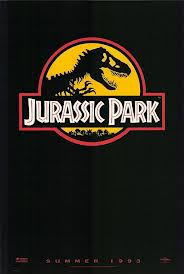
Sheer awesome
—the paleobotanist is an afterthought, invited to secure the cooperation of her paleontologist boyfriend, because his knowledge of fossils is necessary to understand living dinosaur behavior…in the same way any anthropologist can easily explain all human behavior. I feel so bad for Dr. Sadler. She gets one scene in which she wonders how extinct plants can be there, one scene in which she frets over those plants being there, and two scenes in which she uses her knowledge to solve the plant-related mystery of why the triceratops is sick and to explain why the so-called lysine contingency doesn’t work, which are both naturally edited from the movie. The rest of the time, she’s screaming and running like everyone else.
Why, I ask you? Apart from a weirdly-colored sky or fantastically unearthly cityscape on the horizon under a ringed moon, nothing says alien like a plant. They can look like anything, smell like anything, taste like anything. They can feed you, drug you, heal you, clothe you and kill you. And these are just the plants on Earth! Why don’t we see more of them in science-fiction and fantasy?
Because no one wants to read about them, that’s why. And it is a sad, unavoidable fact that only readers buy books.
With that in mind, very little of what I imagine makes its way into my books. Given that I write 400k word books, I’ll understand if you are skeptical, but it’s true. My Lords of Arcadia compendium contains 43 illustrated pages of uniquely Arcadian plants; I mention (count). Those I do mention are rarely described beyond some identifying feature—Taryn’s eyes the color of gedan fruit; gorupaw, the tubers eaten by the Arkes in place of potatoes; the tough outer rind of shai, which Eurydome peels so prettily. Even the great fields of crop grown by the Farasai receive no more than a nod and a name.
In Arcadia, there is some ‘drift’ as plants and even animals from Earth were carried over by accident or design at some point in those worlds’ shared past. I was able to plausibly mingle references to corn, lilies and willow trees among my fictional flora, but I don’t always get to do that. In The Last Hour of Gann, roughly 85% of the book takes place on an alien planet, where I ran headfirst into the metaphorical wall of a problem sci-fi writers have always had to combat: how much alien is too much?
I don’t remember where I read or heard this, but someone once described the reader of fiction as a jogger. You want your reader to enjoy his run, but he needs to keep a steady pace and get where he’s going in good time. Momentum, this person said/wrote, is the magic by which written words become mental movies. Every single thing that makes the reader break that momentum is like a weight attached to a jogger’s ankles. Sometimes, that’s a good thing; it’s okay to catch your breath after a hard climb or pause a moment to admire the scenery, or even just slow down to ponder your place in the universe.

And if you lived here, you’d be home by now.
However, this person warned, too many unfamiliar words or other details can exhaust your little man and eventually, he may give up. A writer should therefore keep an editing eye open whenever he or she introduces the strange or unusual. Keep it simple and, whenever possible, keep it on familiar ground. This is why so many fantasy worlds have wonderfully original inhuman characters galloping across shimmering plains toward crystalline towers…on horses.
I didn’t want to do that on Gann. I also didn’t want to bloat up an already oversized book with a lot of explanations every time Amber and the other human colonists looked around. So in a way, I cheated. The world of Gann is a desolate one in which its ecosystems are just beginning to stabilize after a long post-apocalyptic age. Rather than figure out how to incorporate hundreds of plants and animals in delicate balance as my colonists slogged across the plains, I instead could focus on only a hardy few. In Gann’s notebook, there are only eighteen plants, six insects and six living beasts, and still not all of them made it into the final draft. I felt safe referring in general to grass and thorns, reasoning that these forms of life have evolved in independent conditions on Earth and, this being an Earth-like planet, parallel development is not completely ridiculous. Getting a little bit away from botanical examples, I also mention gold once or twice, since gold is an element and stands a pretty good chance of being found elsewhere in the universe.
As with so many other aspects of worldbuilding, success stems from realism and subtlety. Medicinal herbs do not act instantly or with surgical precision and are rarely easy to prepare or administer. Edible foods do not always mean tasty foods; before they had years of agricultural selection and cultivation, most of the crops we eat today were much smaller and both looked and tasted very different. Most pre-industrial cultures ate subsistence foods, which usually meant little to no variety and nasty to boot, at least by Western standards. Intoxicants and hallucinogens often require some form of preparation, most are addictive, and in their natural form can demonstrate dangerously unpredictable dosage strength. Something else to consider is that most of the natural drugs we take today originally had a medicinal or spiritual purpose and their recreational use was forbidden, sometimes on pain of death. Pretty much anywhere you could name, the local people would have known how to best utilize every tree, bush, flower or vine, and they were not likely to use any of it lightly.
On my shelves are three reference books I have used on nearly every novel: The Peterson Field Guide to Medicinal Plants and Herbs, Scott Cunningham’s Magical Herbalism, and American Indian Healing Arts by E. Barrie Kavasch and Karen Baar. As always, there is the internet, which can be an invaluable resource once you weed out the plant-porn. (Heh heh. Weed) Bio.brandeis.edu/fieldbio/Sylvain/use... has a decent list of the more common medicinal plants organized by their medicinal use, which is handy. Anniesremedy.com/chart/php has them organized alphabetically or by use. For the more spiritual side of plants, check out themagickalcat.com or earthwitchery.com for an excellent herbal grimoire. And of course, nothing beats nature herself. Spend a day at your local botanical garden, browse a nursery, or just take a walk in the park. And when you put a plant in your world, ask yourself two questions: What does it do and how is it used? On the surface, those are similar questions, but the answers can be very different and those differences help define your world and the people who live there.






